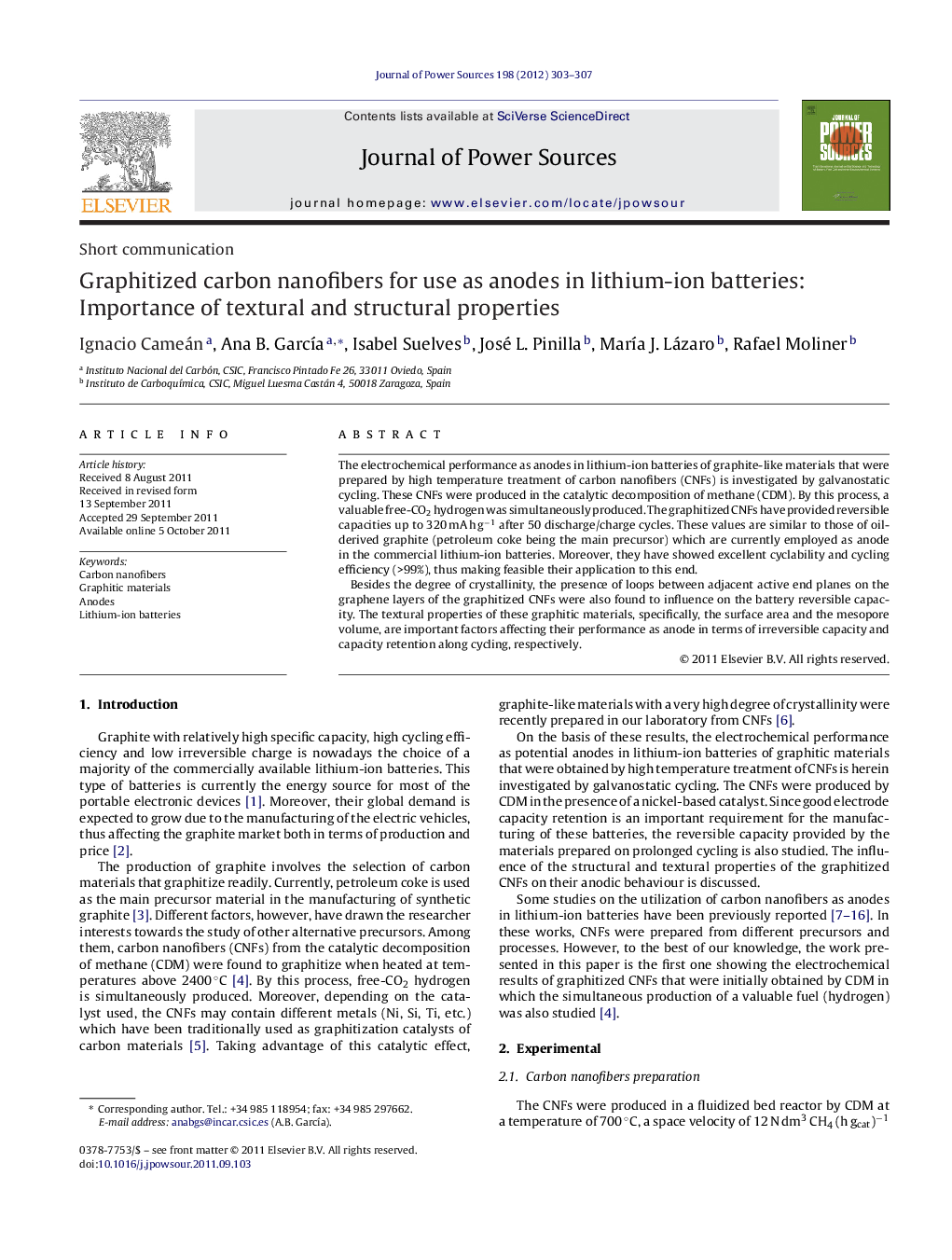| Article ID | Journal | Published Year | Pages | File Type |
|---|---|---|---|---|
| 1288426 | Journal of Power Sources | 2012 | 5 Pages |
The electrochemical performance as anodes in lithium-ion batteries of graphite-like materials that were prepared by high temperature treatment of carbon nanofibers (CNFs) is investigated by galvanostatic cycling. These CNFs were produced in the catalytic decomposition of methane (CDM). By this process, a valuable free-CO2 hydrogen was simultaneously produced. The graphitized CNFs have provided reversible capacities up to 320 mA h g−1 after 50 discharge/charge cycles. These values are similar to those of oil-derived graphite (petroleum coke being the main precursor) which are currently employed as anode in the commercial lithium-ion batteries. Moreover, they have showed excellent cyclability and cycling efficiency (>99%), thus making feasible their application to this end.Besides the degree of crystallinity, the presence of loops between adjacent active end planes on the graphene layers of the graphitized CNFs were also found to influence on the battery reversible capacity. The textural properties of these graphitic materials, specifically, the surface area and the mesopore volume, are important factors affecting their performance as anode in terms of irreversible capacity and capacity retention along cycling, respectively.
► CNFs provide reversible capacities of 320 mA h g−1 after 50 discharge/charge cycles. ► CNFs show excellent cyclability and cycling efficiency (>99%). ► The mechanism of lithium intercalation into the CNFs is typical of graphite. ► The CNFs mesoporosity negatively influence on the battery cyclability.
